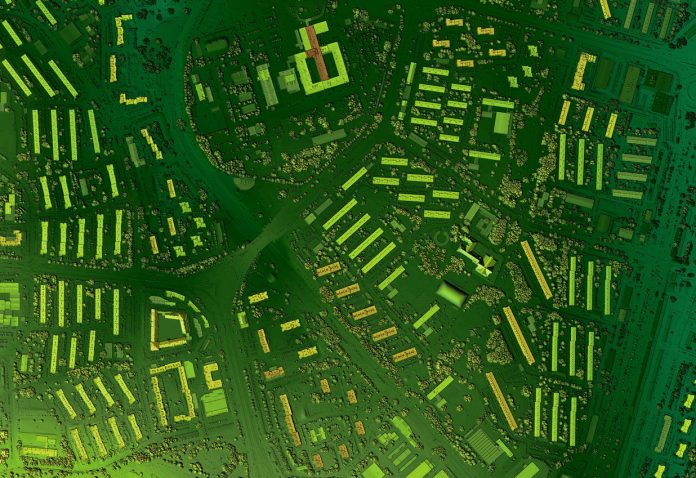
Forbes McKenzie, CEO of McKenzie Intelligence Services Ltd, maps out the political future in terms of how geospatial tech transforms government strategy
From the ongoing conflict in Ukraine to military coups in Africa, geopolitical instability is at its highest in almost eight decades. Indeed, escalating competition between China and America, along with shifting global political allegiances, has led the U.S. National Intelligence Council to predict a period of unparalleled turbulence reminiscent of the Cold War in its Global Trends 2040 report.
With each conflict, crisis and power shift comes significant risk to both governments and economies. Moreover, protecting populations becomes an ever-challenging task as nations grapple with where best to allocate much-needed effort and resources.
However, we are also in an era of massive technological advancement, where cutting-edge geospatial technologies – from geographic information systems (GIS) and advanced geospatial satellites to remote sensing instruments and global positioning systems (GPS) – offer unmatched capabilities for navigating complex geopolitical situations.
Harnessing the power of geospatial data for government strategy
Geospatial technologies allow governments to gather, analyse and interpret up-to-date geographical data. They capture real-time information that can be layered over maps with various other datasets, providing a complete and comprehensive picture.
Geofencing, for instance, allows for real-time tracking of assets and the movement of people across high-risk areas. This technology can map conflict zones, evaluate areas undergoing electoral changes and monitor territories and populations exposed to socio-political unrest. For governments, this nuanced insight is invaluable, enabling officials to determine safe and sustainable courses of action.
Spotlight on satellite data
artif risks, such as conflict and social unrest, are notoriously difficult to calculate and factor into plans owing to their rapidly developing and unpredictable nature. Outcomes also tend to hinge on the responses of different actors, making them even more difficult to plan for.
High-resolution satellites and other geospatial technologies resolve this by providing real-time insights into on-ground conditions over vast areas – including locations traditionally challenging to map. This is crucial for understanding complex terrains and dangerous sociopolitical conditions.
Geospatial technologies: Effective risk management
One of the most significant benefits of geospatial technologies is that they allow governments to demarcate evolving risk areas, facilitating swift reactions to serious situations like outbreaks of violence. Once again, this intelligence helps in planning careful and considered actions, furthermore ensuring that malicious actors don’t go unpunished or undetected. The 2019 discovery of a mock aircraft carrier in Iran underscores this, proving just how useful geospatial tech can be when it comes to uncovering potential war crimes and hidden threats.
Precision in risk intervention with geospatial technologies
Of course, geospatial tech empowers governments to identify areas in need of risk mitigation or intervention, too, allowing for more targeted and efficient resource allocation. Rapid intelligence will enable countries to send aid more accurately and quickly to areas in need, with leaders who are empowered to track at-risk populations as they move for better protection.
Enhanced communication
Effective communication with other nations, bodies, and rescue organisations is likewise vital. Geospatial technologies ensure that all parties remain informed while eliminating delays that could endanger lives or jeopardise investments.
Detailed risk attenuation
Once governments and all other parties involved have reached a unified agreement, comprehensive attenuation plans can be developed and adopted. Up-to-date geospatial data is fundamental here, equipping countries with the right defence tools.
Maintaining vital operations with geospatial information
Beyond defending territories and people, governments must maintain essential operations such as transport links during crises. Geospatial information is key to doing this safely, allowing governments to protect the economy by keeping things running insofar as possible without compromising people.
Combating disinformation
Finally, a critical but less recognised advantage of geospatial technologies is their role in stopping dangerous disinformation. When satellites tracked the whereabouts of Kim Jong Un when he was reported dead or missing in April 2020, world leaders gained vital insights into the truth. Without these insights and accurate information, appropriate reactions would have been impossible.
Overcoming blind spots
Satellite imagery ultimately offers an extra set of extremely accurate, rapid-fire eyes, generating insights into areas otherwise off the political radar. In regions with media bans, for example, it’s still possible to find out what’s happening on the ground. One example of this is geospatial tech being used to evaluate the damage from an Iranian missile strike on the Al-Asad Airbase in Iraq, despite no area access being granted to people.
Geospatial technologies informing future policy
Another critical point to remember is that intelligence gathered through geospatial technologies serves as a historical record and informs better future crisis responses and policy.
Practical considerations for governments
For governments to truly harness these benefits, however, they must invest in the right processing technologies. Because datasets are so large and consistently updated, AI analysis is the only viable way to process information quickly, allowing for almost real-time conclusions. Besides investing in infrastructure for real-time data gathering, storage, and processing, governments must also secure the right AI analytics tools to generate meaningful analysis. This can then be backed up by technical, humanitarian, and military expertise to reach the right conclusion.
Fostering partnerships with international agencies, research institutions, and private sector entities based on evidence is equally crucial, especially when responding to unprecedented data findings. The difference this can make to national and international security most certainly pays off when compared to initial technology investment.
Final thoughts: Geospatial and AI-driven geopolitical data intelligence
Geospatial and AI-driven geopolitical data intelligence have the potential to save time, money and lives. This technology not only protects public infrastructure but also enhances public safety, supporting strategic decision-making whilst streamlining resource allocation.
As the Chartered Institute of Internal Auditors advises in its Navigating Geopolitical Risk report (February 2023), governments must shift from reactive responses to detailed scenario planning and horizon scanning, taking a long-term view of geopolitics. Embracing geospatial technology is key to this process, offering a path to more informed, proactive and effective management of complex and ever-changing geopolitical landscapes.
This piece was written and provided by Forbes McKenzie is CEO of McKenzie Intelligence Services Ltd.










